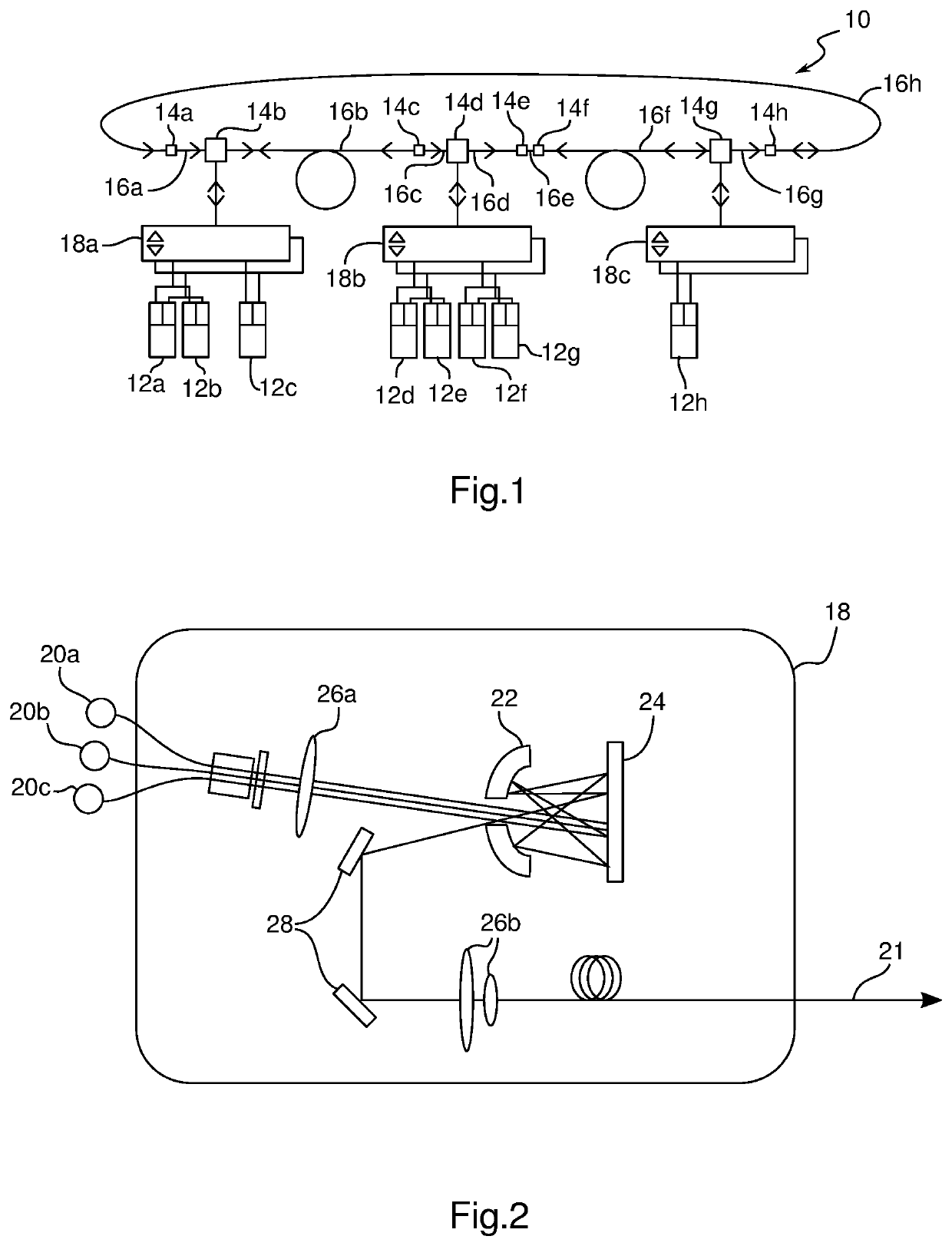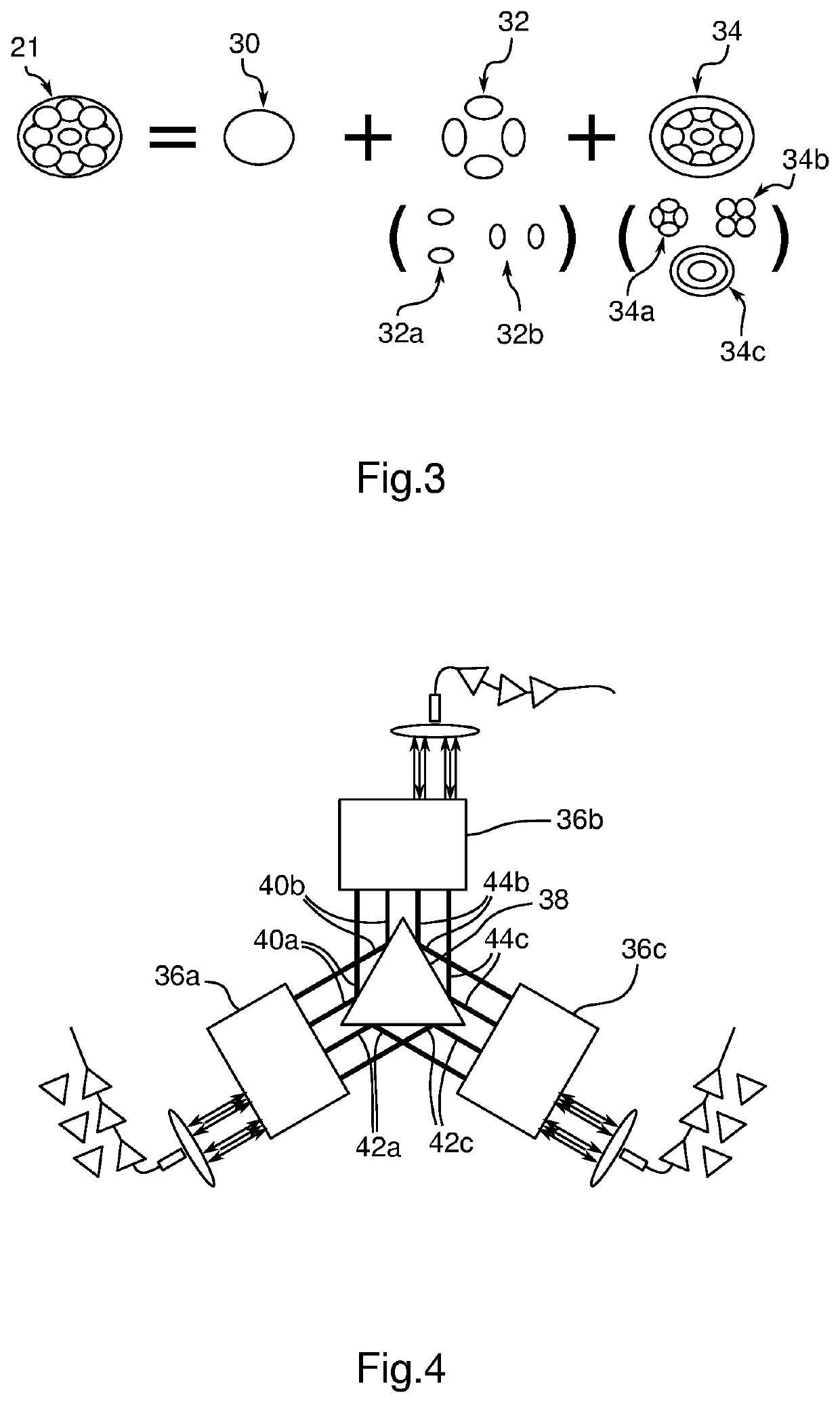Embedded optical ring communication network for aircraft
a technology of optical ring and communication network, which is applied in the direction of fiber transmission, multimode transmission, transmission, etc., can solve the problems of increased fuel consumption during flight, complex installation and maintenance of cabling, and high cost of cabling, so as to improve the security of data transmission, avoid modal dispersion, and increase the number of equipment
- Summary
- Abstract
- Description
- Claims
- Application Information
AI Technical Summary
Benefits of technology
Problems solved by technology
Method used
Image
Examples
Embodiment Construction
[0037]The following embodiments are examples. Although the description refers to one or more embodiments, this does not necessarily mean that each reference concerns the same embodiment, or that the characteristics are only applied to one single embodiment. Single characteristics of different embodiments can also be combined to provide other embodiments. In the so figures, the scales and proportions are not strictly respected for purposes of illustration and clarity.
[0038]FIG. 1 schematically represents an optical ring communication network 10 according to an embodiment of the invention, embedded for example in an aircraft. The optical network 10 is intended to enable the transmission of computerised data between equipment 12a-12h. For this purpose, the communication network comprises an assembly of distribution boxes 14a-14h, each connected directly to two other distribution boxes by multimode and bidirectional optical fibers 16a-16h so as to form a ring. As visible in particular b...
PUM
 Login to View More
Login to View More Abstract
Description
Claims
Application Information
 Login to View More
Login to View More - R&D
- Intellectual Property
- Life Sciences
- Materials
- Tech Scout
- Unparalleled Data Quality
- Higher Quality Content
- 60% Fewer Hallucinations
Browse by: Latest US Patents, China's latest patents, Technical Efficacy Thesaurus, Application Domain, Technology Topic, Popular Technical Reports.
© 2025 PatSnap. All rights reserved.Legal|Privacy policy|Modern Slavery Act Transparency Statement|Sitemap|About US| Contact US: help@patsnap.com


